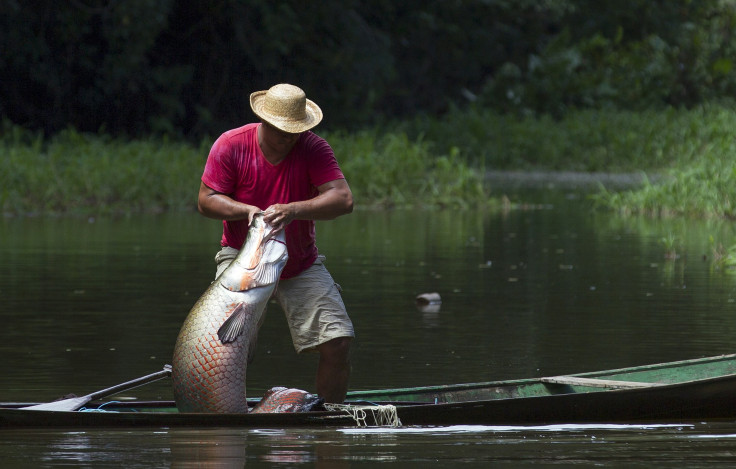Amazon’s Giant Arapaima On The Brink Of Extinction Due To Overfishing

The arapaima, a giant fish that used to dominate the Amazon river, has become a victim of overfishing and faces the threat of extinction in many local communities, according to a new study. The researchers found that the commercially important fish has become extinct in eight of the 41 communities covered by the study.
As part of the study, published in the journal Aquatic Conservation: Freshwater and Marine Ecosystems, the researchers compared two theories -- the bioeconomic theory, which the government has depended on to protect fish populations; and the fishing-down theory, which predicts that large, high-value, easy-to-catch fish can be fished to extinction. The findings helped the researchers conclude that the effects of fishing on tropical fish were worse than previously believed, BBC News reported.
“Bioeconomic thinking has predicted that scarcity would drive up fishing costs, which would increase price and help save depleted species,” Leandro Castello, an assistant professor of fisheries at Virginia Tech's College of Natural Resources and Environment and the study’s lead author, said in a statement. “If that prediction were true, extinctions induced by fishing would not exist, but that is not what has happened.”
The arapaima, which can grow up to 10 feet in length and weigh more than 400 pounds, comes to the surface to breathe every five minutes to 15 minutes. The fish’s size makes it easy to find and it dominated fisheries in the Amazon a century ago. But, three of the five known species of arapaima have not been seen for decades, researchers said.
The study revealed that arapaima populations have died out in 19 percent of the fishing communities; is approaching extinction in 57 percent of the communities; and has been over-exploited in 17 percent of the communities.
According to David G. McGrath of the Earth Innovation Institute in San Francisco, cited in the study, in communities that have implemented fishing rules, such as minimum capture size and restricted use of gill-nets, the density of arapaima is 100 times higher than in places that do not follow such rules. The study also found that only 27 percent of the communities surveyed have rules for managing arapaima fishing.
“Many previously overexploited arapaima populations are now booming due to good management. The time has come to apply fishers' ecological knowledge to assess populations, document practices and trends, and solve fisheries problems through user participation in management and conservation,” Castello said.
© Copyright IBTimes 2024. All rights reserved.












